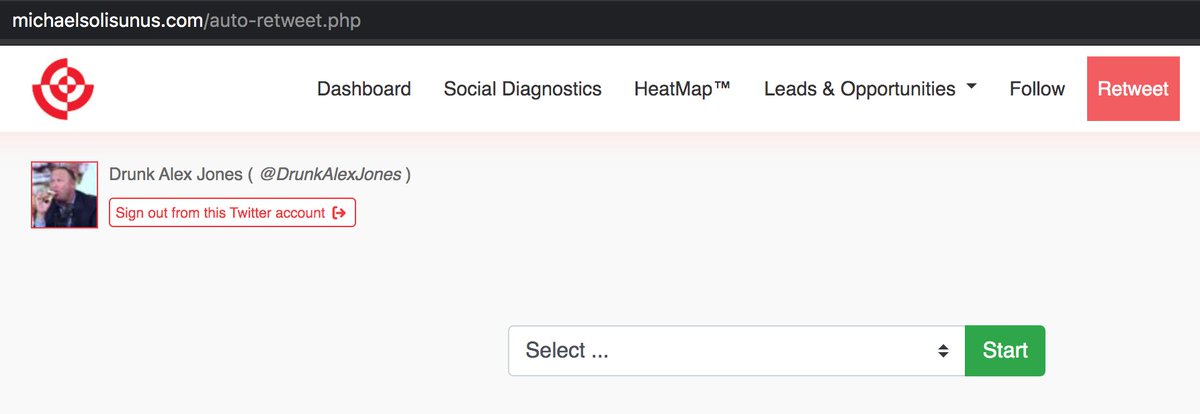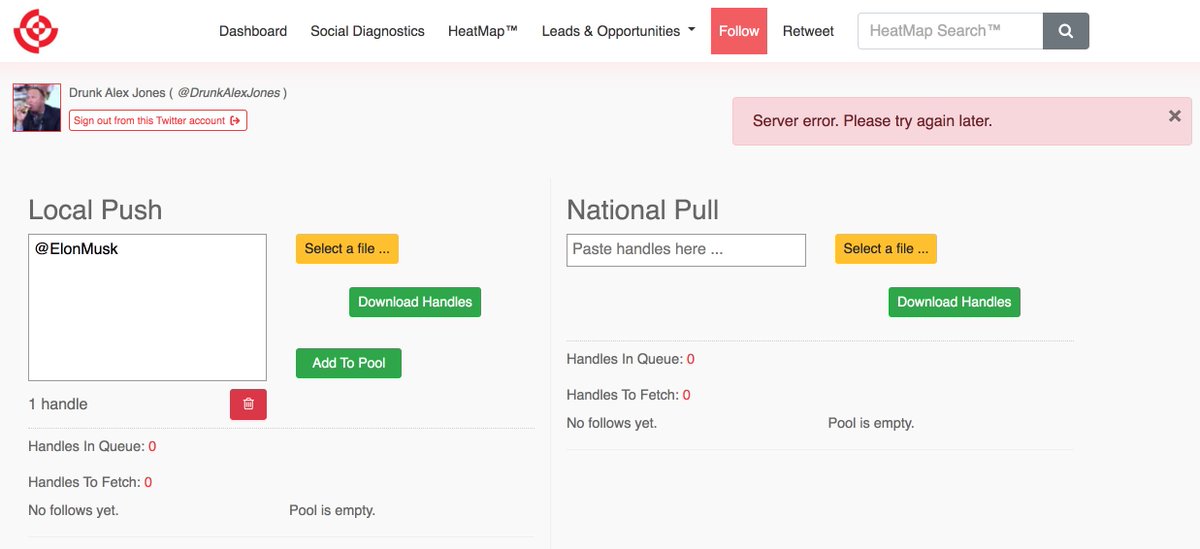Power10 retweet automation creator @JasonLSullivan_ has been excitedly promoting his new magainfo(dot)tv video site. This thread is not about that site, however. It is about another site with the same IP address: michaelsolisunus(dot)com.
cc: @ZellaQuixote


cc: @ZellaQuixote



(Previous thread on the now-defunct Power10 retweet automation software, as well as reporting from Business Insider on the topic)
businessinsider.com/power10-activi…
businessinsider.com/power10-activi…
https://twitter.com/conspirator0/status/1172975053019013120
At first glance, michaelsolisunus(dot)com looks like an empty website with placeholder "Home", "About Us", and "Contact Us" sections. What's up with that "Go to App" button in the corner? 

The "Go to App" button leads to an authorization screen for a third-party Twitter app named "Michaelsolisunus" that requests a pretty comprehensive litany of permissions. We had @DrunkAlexJones give the mysterious app a whirl. 

This is a good time to point out that one should exercise extreme caution when visiting dodgy websites or giving third-party apps permission to one's social media accounts, especially if one has no idea what the app in question does.
We (or rather @DrunkAlexJones) had to verify an email address in order to access all of the app's features. Interestingly, the confirmation email appears to be from Cyphoon, Power10 creator Sullivan's social media consulting company.
reuters.com/article/us-usa…
reuters.com/article/us-usa…

Much like the old Power10 automation app (banned in September 2019), the Michaelsolisunus app offers automated retweets and automated follows. It also has some rudimentary analytics features, including the ability to track and log the retweeters of a set of tweets. 







We poked through the app's Javascript code and found a constant indicating the maximum length of a tweet is 140 characters (Twitter bumped it to 280 in late 2018). In addition to being amusing, this is a possible indicator that the developer reused code from several years ago. 

We had trouble getting some of the Michaelsolisunus app's features to work, and were also unable to find any content that had been retweeted with it. If either of these things change, this thread will be updated with additional analysis.
Update: both the Michaelsolisunus Twitter app and the @JasonLSullivan_ Twitter account are presently suspended. 



• • •
Missing some Tweet in this thread? You can try to
force a refresh































